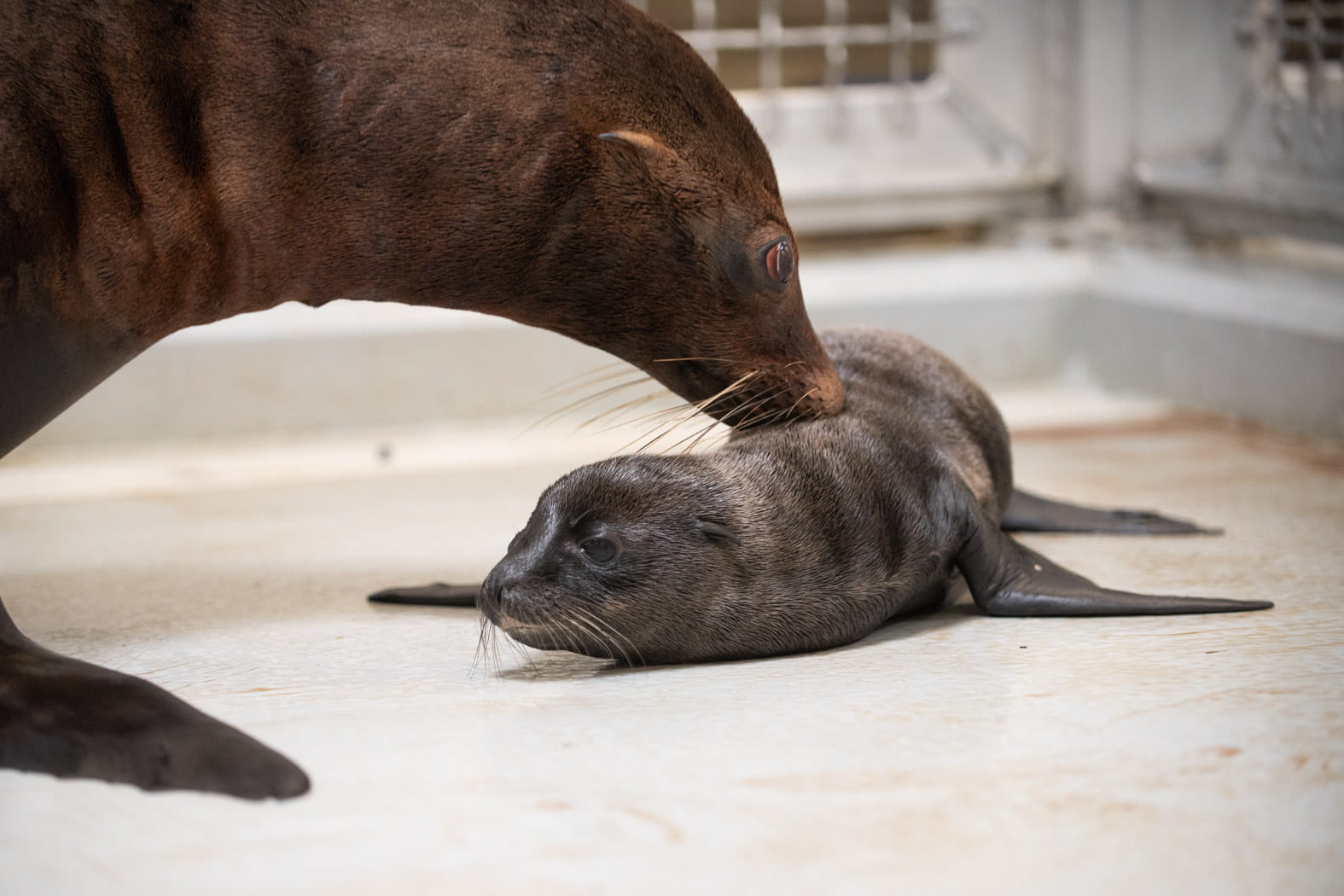
A sea lion pup at Columbus Zoo and Aquarium. Credit: Courtesy of Grahm S. Jones
By visiting adorable new animals at the Columbus Zoo and Aquarium, guests have a window into the zoo’s broader conservation efforts around the world.
The zoo is participating in 64 conservation projects in 19 countries this year, Michael Kreger, vice president of conservation and sustainability at the zoo, said. These projects support 33 different organizations and 11 Saving Animals From Extinction programs, which were established by the Association of Zoos and Aquariums.
In-house conservation efforts include the recent births of a baby elephant June 16 and a baby sea lion June 17, according to a June press release.
Both baby animals will be gradually introduced to the other animals to help replicate their natural socialization environments, Randy Junge, vice president of animal health at the zoo, said. This will also be an opportunity for two of the other younger female elephants to learn how to take care of a baby.
“Elephants are naturally herd animals, and in the wild, the baby would be born in a herd of other moms and babies and grow up in this social environment,” Junge said.
While the elephant calf will never be reintroduced into the wild, he is important when it comes to sustaining the elephant population in zoos, Kreger said. Asian elephants are currently considered an endangered species and are at risk due to human interactions.
“The major threat for elephants, really [for] Asian elephants — it’s not ivory, like it is with African elephants — it’s this conflict between people and elephants,” Kreger said. “We need to work with local people and conservation organizations and governments to try and get more of the human-elephant coexistence instead of conflict.”
One such conflict revolves around the palm oil plantations generally found in Borneo and Indonesia, Kreger said.
“Elephants actually walk through these palm oil plantations, and the goal is that people who work in the plantations don’t see the elephants as a threat to those plantations and don’t want to remove those elephants which sometimes means killing them or trapping them,” Kreger said. “It’s not telling people, ‘Don’t grow oil palms,’ it’s telling them that if you do that, take wildlife into account.”
To remedy the situation, the Certified Sustainable Palm Oil program, which exemplifies the Columbus Zoo’s mission of sourcing ethical palm oil, is helping farmers live alongside the elephants while still supplying palm oil, Kreger said. The zoo also participates in SAFE programs through the Association of Zoos and Aquariums, such as the SAFE Asian elephant and black rhinoceros programs.
The Asian elephant program has three components: researching the Elephant Endotheliotropic Herpesvirus — a disease that can kill elephants, educating people about dangers facing the Asian elephant population and developing a registry for the Indonesian government of every elephant in human care in Indonesia. The goal of the registry is to prevent illegal Asian elephant trafficking, Kreger said.
Visitors can participate in the upcoming Plastic Free EcoChallenge in July — a campaign for removing plastics from the oceans, Kreger said. Participants can find the challenge on the program’s website and log their consumption of single-use plastics, with the goal of reducing how much they use.
“It’s kind of a friendly competition among zoos and aquariums, you know, and other organizations, but everybody is welcome to join, and that’s a good way to keep plastics out the waterways and out of the oceans,” Kreger said.
He said reducing plastics in the oceans is important, because rescue facilities are frequently finding that plastic ingestion and net entanglement are common problems for sea lions and other ocean animals.
“They’ve got that wrapped around them, or maybe a 6-pack plastic ring kind of thing,” Kreger said. “With the pups, you know, it’s even worse because the pups can easily get tangled in this stuff, and not only is it hard for them to move, they can drown in it, or it can keep them from feeding.”
The zoo also participates in the rehabilitation of manatees, having released over 30 manatees back into the wild as of 2021. The zoo currently has five manatees and is one of only two facilities north of Florida to participate in the Manatee Rescue and Rehabilitation Partnership — the other being the Cincinnati Zoo and Botanical Garden.
“If they’re going to need possibly years of care, then they’re going to be sent to a place like us, and then we allow them to grow up here until they’re ready to be released, and if not released, certainly staged for release,” Kreger said. “Typically, the release site is where the manatee was first found.”
Kreger said the zoo is also working to establish partnerships for the conservation of rhinos. Upcoming conservation efforts involve the greater, one-horned rhino in India and Nepal and the critically endangered eastern black rhinos in the Akagera National Park in Rwanda.
“Even though it’s been a rough year, we’re still at it,” Kreger said. “We’re a conservation institution.”


